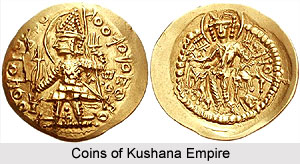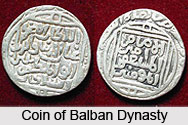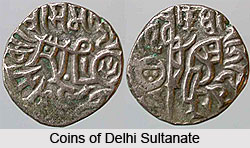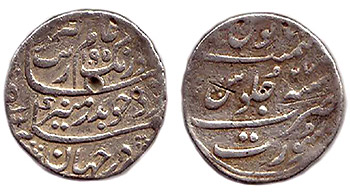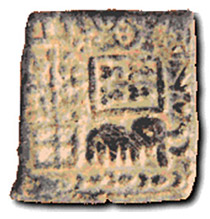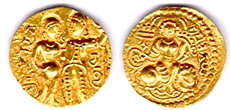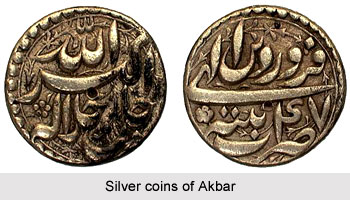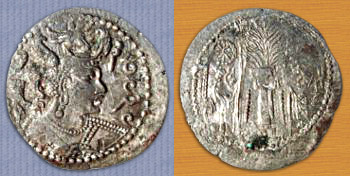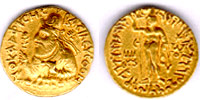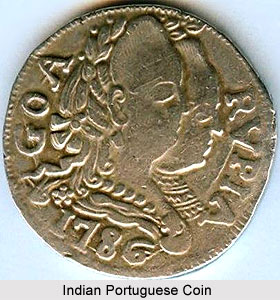 The Portuguese were the first people who thought to establish their territorial dominion in India. After obtaining the approval letter from the Zamorin, the Raja of Calicut, the trade between India and Portugal began. Establishing the trade and commercial relation with India had given rise to the thought of establishing their supremacy in the eastern seas. With the indulgence of political intrigues in the Indian states, the Portuguese succeeded in establishing their settlements at Diu, Daman, Salsette, Bassein, Chaul and Bombay on the west coast, San Thome near Madras and Hooghly in Bengal. They also extended their authority over the major part of Ceylon. Later due the Portuguese lost most of their territories and by the end of the eighteenth century only Diu, Daman and Goa were in their dominion.
The Portuguese were the first people who thought to establish their territorial dominion in India. After obtaining the approval letter from the Zamorin, the Raja of Calicut, the trade between India and Portugal began. Establishing the trade and commercial relation with India had given rise to the thought of establishing their supremacy in the eastern seas. With the indulgence of political intrigues in the Indian states, the Portuguese succeeded in establishing their settlements at Diu, Daman, Salsette, Bassein, Chaul and Bombay on the west coast, San Thome near Madras and Hooghly in Bengal. They also extended their authority over the major part of Ceylon. Later due the Portuguese lost most of their territories and by the end of the eighteenth century only Diu, Daman and Goa were in their dominion.
The Portuguese people issued coins in gold and silver from Goa. The gold coins were termed as `Cruzado` or `Manoel` and were issued in the same size, value and weight as the `Pagodas` or `Hons`. Along with the gold coins, called `Manoel`, another type of gold coin named `Meio-manoel`, and `Meia-espera` and `Espera` in silver were also issued. The gold `Manoel` and the silver `Espera` had the Cross of the Order of Christ on the obverse and the armillary sphere, the device of the King D. Manoel on the reverse side of the coin were found. The half pieces of these coins bore the word `MEA` surmounted by a crown on one side of the coin and the armillary sphere on the flip side of the coin. The Governor of Goa suspended the issue of these coins in 1519. After this in 1549, gold and silver coins were reintroduced.
During this period, the Portuguese had adopted the Apostle St. Thomas as their patron saint for India. Since then it had been decided to etch the effigy of St. Thomas on their Indian coins and to give the coins the name of St. Thome. The gold and the silver coins had a seated or standing figure of St. Thomas with the letters S and T on one side of the coin and the crowned arm of Portugal with the initials of the reigning monarch on the other side of the coin. Sometimes small inscriptions were also found in the coins. A few gold coins were also issued during the ruling period of King Joas III and were minted at Lisbon, bearing a circular legend on the St. Thomas side. Later in 1728, the figure of the saint was substituted on the gold coins with his cross. Since then the design of the gold coins was modified from time to time to suit the changing need of the human society, culture and economy. The gold coins of Portuguese were of the value of 20, 10, 5 and 2 `Xerafirms`.
In 1568, a decree was issued to open a mint at Cochin for issuing gold and silver coins though it was not certain whether the mint was opened and any coin was issued or not. Two mints were opened at Bassein and Daman in 1611 for issuing copper `Buzaruccos`. Later on `tutenag` coins were issued from these mints. These mints were closed down in 1739. After this a mint was probably opened in 1644 at Chaul though it was closed on its cession to Marathas in 1740. The copper `Buzaruccos` were issued there and had the coat-of-arms on one side of the coin and a sheaf of arrows on the flip side of the coin. In the later period several other mints were opened and due to some certain and uncertain reasons, the mints were closed down. Several mints issued silver `Xerafirms` and copper `tutenag` coins. Though the coins had no distinguishing mint marks on the coins but later `DO`, `DD` or `OO` or the full name `DIO` was used.
The coins of Portuguese had managed to showcase a huge variety in the ruling period of different rulers. Silver coins of the value of 300 Reis, known as `Bastiad` or `Xerafirm` were issued with the figure of St. Sebastian during the reign of D. Sabastiad. In this period, silver `Tanga` were also issued and the coins had an arrow as the device on one side. In the reign of D. Fillipe I, coins of only one `Tanga` and half `Tanga` were issued and these coins bore the standing figure of St. Fillipe. In 1614, in the ruling period of D. Fillipe, it was decided to issue coins of two, one and half `Tanga` and also in later period it was decided to issue coins of 30,20 and 10 `Buzaruccos` in silver. These coins, when issued, displayed the Cross of Calvary instead of the figure of the saint. During the time of D. Fillipe III, the silver coins had the Cross of Aviz and towards the end of his reign, some saint type questions were issued. Later the figure of St. John was placed on the coins.
With the commencement of the Cross of the Order of Christ in 1650, the Saint type was abolished and this pattern of coins was continued till 1726. During this time, D. Jaos VI was on the throne and the bust of the king was introduced in place of the Cross on the coins of higher denominations. Only on the `Tanga` coins did the Cross of the Order of Christ continue. Later in 1775, the word `Rupiya` was adopted for the coins of 2 `Xerafirms` and since then the value of the coins was reckoned in terms of rupees. The Goa mint was closed in 1869 and subsequently the coins for Portuguese India were minted at the British mint at Bombay.
The silver `Xerafirms` of Portuguese issued in 1684-85 bore the barbaric representation of the crowned arm of Portugal on one side and the Cross of St. George on the other side of the coin. These coins did not correspond to the Goa pieces neither in design nor in weight. For this reason, a new coin was issued in 1688 with the crowned arm and the Cross of the Order of Christ. In 1729, `Rupia` and `Xerafirm` or `Pardeo` (equal to half a rupee) were issued with the Cross of St. Thomas. In 1806, the Cross of St. Thomas again appeared on the coins and it survived till the closure of the mint. In 1781, some coins were issued from this mint the conjugate busts of D. Pedro III and Maria I. the copper coins, called `Atia` its half and quarter, were issued during the eighteenth century. These coins sometimes display the arm of Portugal and the Cross of the Order of Christ. `Buzaruccos` of tutenag were issued intermittently from about 1745 to 1828. The coins were issued in an array of varieties.
In 1958, in the Portuguese occupied territories, the decimal coinage was introduced. These coins were termed as `Centavos` and `Escudo` and these coins were active for only three or four years. In 1961, with the absorption of the Portuguese enclaves of Goa, Daman and Diu in Indian Republic, the Portuguese existence came to an end. During this period, coins of 10 and 30 `Centavos` in bronze and of 60 `Centavos`, and 1 and 3 `Escudos` were issued in cupro-nickel.
